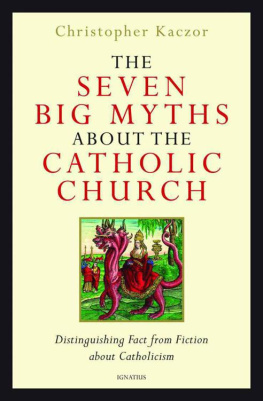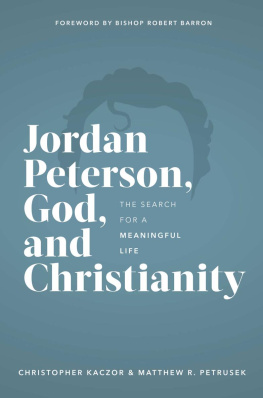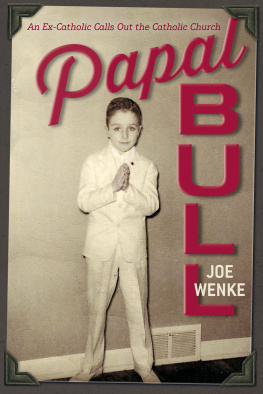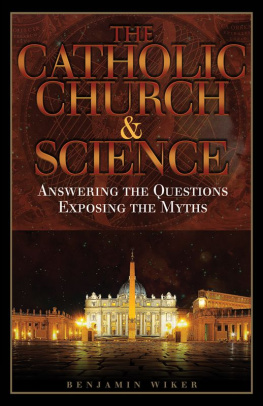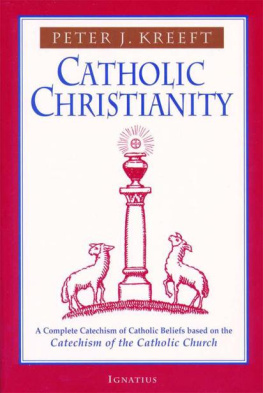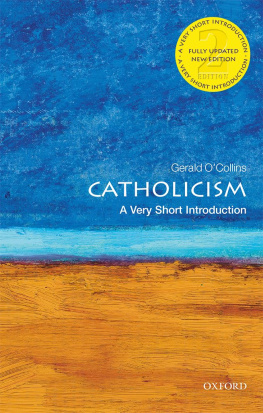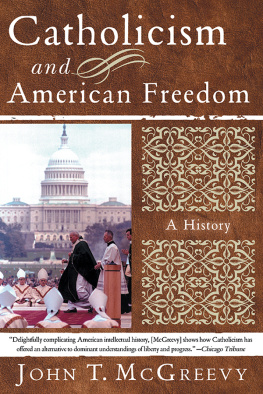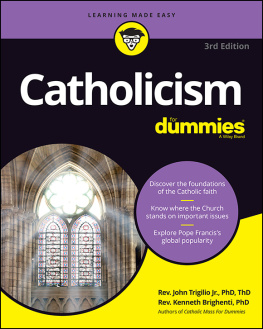THE SEVEN BIG MYTHS
ABOUT THE
CATHOLIC CHURCH
CHRISTOPHER KACZOR
THE SEVEN BIG
MYTHS ABOUT THE
CATHOLIC CHURCH
Distinguishing Fact from Fiction about Catholicism
IGNATIUS PRESS SAN FRANCISCO
Unless otherwise noted, Scripture quotations (except those within citations) have been taken from the Revised Standard Version of the Holy Bible, Second Catholic Edition, 2006. The Revised Standard Version of the Holy Bible: the Old Testament, 1952, 2006; the Apocrypha, 1957, 2006; The New Testament, 1946, 2006; the Catholic Edition of the Old Testament, incorporating the Apocrypha, 1966, 2006; the Catholic Edition of the New Testament, 1965, 2006 by the Division of Christian Education of the National Council of the Churches of Christ in the United States of America.
All rights reserved.
Cover art:
The Whore of Babylon
Colored woodcut from the Luther Bible, c. 1530
Bible Society, London, UK / The Bridgeman Art Library
Cover design by John Herreid
2012 by Ignatius Press, San Francisco
All rights reserved
ISBN 978-1-58617-791-1
Library of Congress Control Number 2012936914
Printed in the United States of America
DEDICATED TO MILES AND SHIRLEE KESSLER
TWO OF MY BEST TEACHERS
TWO OF MY BEST FRIENDS
CONTENTS
INTRODUCTION
There are not more than 100 people in the world who truly hate the Catholic Church, but there are millions who hate what they perceive to be the Catholic Church .
Bishop Fulton J. Sheen
An atheistic journalist, Peter Seewald, once asked Joseph Ratzinger, the future Pope Benedict XVI, the following question, how many paths are there to God? Cardinal Ratzinger replied, as many as there are people. Each one of us has our own journey of life; each one of us has our own questions, challenges, and opportunities; each one of us is called by God to love him and to love other people so as to find happiness.
In the Christian perspective, God does not leave us alone or abandon us to wandering without aid in our search for happiness and meaning. Rather, God gives us a trustworthy way to return to him. God reveals to us the fullness of truth about our shared human condition in this journey and furnishes us with an illuminating Light to guide us and give us strength on our path. Jesus is Gods revelation to us both about who God is and about what it is to be fully human.
Jesus remainstwo thousand years after his birtha figure renowned for his wisdom, compassion, and courage. For Christians, Jesus is even more than a saintly sage. Christians accept as true Jesus own description of himself, I am the way and the truth and the life; no one comes to the Father but by me (Jn 14:6).
Many people today call themselves Christians, yet believe that they can do without the Church. They love and admire Jesus, but they dislike and are suspicious of the Church. Archbishop Timothy Dolan of New York has talked about this phenomenon, making reference to the famous story of Saul, later Saint Paul, being knocked from his horse on the way to Damascus:
Saul felt around and heard a voice, Saul, Saul, why are you persecuting me? Who are you, Lord? Saul asked. And the voice replied, I am Jesus and you are persecuting me. Now my dear friends in Christ, parse those words carefully. Jesus did not say, You are persecuting my disciples. He didnt say, Youre persecuting my followers. Jesus didnt say, Youre persecuting my friends. Or, Youre persecuting my church. No. Why are you persecuting me?... Jesus and his Church are one. Jesus equals his Church. Jesus and his Church are a package deal.... Im afraid, we are now living in an era where people believe they can have Christ without his Church. People want a king without a kingdom. They want a shepherd with no flock. They want a spiritual family, sure, with God as their Father and Jesus as their brother and them as the only child. They want to believe without belonging. They want a general without an army. They want spirituality without religion. They want faith without the faithful. They want Christ without his Church.
Many people call themselves Christian but do not see the importance of the Church. Indeed, they reject the Church for a variety of reasons. Yet, Jesus sees a deep unity between himself and his body, the Church. To accept Jesus is to become a part of this body, a member of the Church.
The biggest obstacle to people seeing this unity between Christ and his Church is the sinfulness of the members of the Church. As G. K. Chesterton said, The only good argument against Christianity is Christians. The sins of every member of the Church make the message of Jesus less credible and injure the mission given by Jesus to the Church to make disciples of all nations. These sins, including the very grave sins of priests who sexually abused minors and bishops who did not act properly to prevent further abuse, impede the proclamation of the message of Jesus. In these corrupt actions, the members of the Church have separated themselves from Jesus, as the apostles did when all but one abandoned Jesus during his Passion. These sins betray Jesus, as Peter once did in denying Jesus three times. The denials of Jesus by his followers have continued through the centuries. Sadly, every Catholic can say with truth, I have sinned through my own fault, in my thoughts and in my words, in what I have done and what I have failed to do.
These sins do not, however, change the reality of the Churchs unity with Jesus. The Church remains united with Jesus, that is, holy, because of the work and action of Christ in three dimensions. First, Jesus remains united with his Church in the seven sacramentsoutward signs instituted by Christ and administered by the human ministers in the Church to give grace. These sacraments retain their power to transform the lives of the followers of Jesus whether the minister of the sacrament is a great saint or a great sinner. In a similar way, the words of Jesus as read in the Bible remain true, even if the person reading the words aloud is an evil person. The lack of worthiness of the minister cannot destroy the power of the biblical words or the power of the sacraments.
Secondly, the unity of Christ and the Church is evident in the saints, those who most fully receive his sacramental grace and actually live out his message. If the best argument against Christianity is (bad) Christians, then the best argument for Christianity is (good) Christians. Indeed, Christianity is properly measured not by its great sinners but by its great saints, for it is the saints who have lived out the Gospel message, not the great sinners. Would it be fair to judge a hospital by the patients who disregard doctors orders and fail to take their medication? Would it be fair to judge a school by the students who do not pay attention in class and fail to do their homework? The Churchs holiness, her unity with Jesus, is best seen in the saints, by those who most fully lived the message and sacramental life of the Church, by Saint Francis of Assisi and by Mother Teresa, as well as by the holy people that weve known personally in our lives.
Finally, the unity of Christ and the Church is evident in the preservation of the Church from teaching as true what is false in terms of faith and morals. Christ came to reconcile us to the Father and to speak the truth to us in love. Unless there is an authentic interpreter of the message of Jesus, this message is in danger of being compromised. Jesus loved us enough to provide a living, authentic interpreter of the Gospel to ensure that his message would be transmitted faithfully in every age. Catholics believe this authentic interpretation is given by the teaching of the Church, especially the pope. The Holy Father, the Bishop of Rome, speaks with a living voice, responding to the signs of the times, and interpreting human experience, Scripture, Church councils, and his forefathers on the Petrine chair in light of present questions, needs, and concerns. Christs Vicar on earth, despite personal weaknesses and limitations, safeguards the unity of the Church and, guided by the Spirit, has as a mission the continuing fathering of the Church here on earth. In this, every Vicar of Christ is like Peter before him who, although he denied the Lord three times, was still called to confirm his brethren and feed Christs sheep.
Next page
